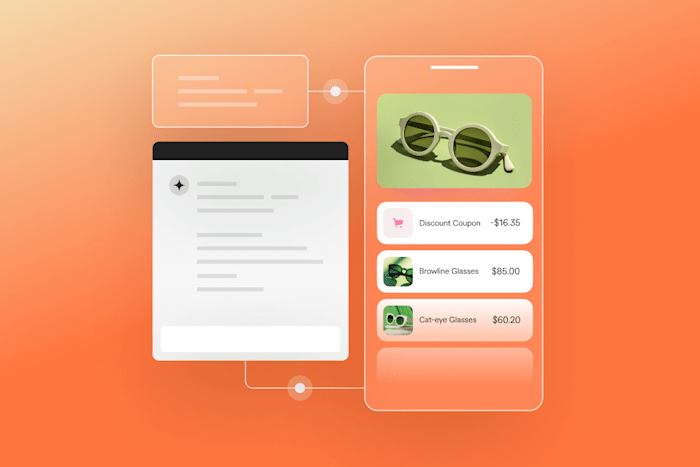What Are Customer Acquisition Costs? + How To Calculate
Get smarter about your marketing decisions by having a clear understanding of what your customer acquisition costs (CAC) are and if your business is profitable or not.
 January 30, 2025
January 30, 2025 5 minute reading
5 minute reading
The ultimate goal of any marketing strategy is to generate new sales and customers. But do you know how much you’re spending to acquire those customers? And what kind of ROI are you seeing?
To find out important data like this, you need to calculate your customer acquisition costs (CAC). This can help you determine if your online marketing expenses are worth the number of new customers you’re seeing from them.
Read on to learn more about customer acquisition cost, what it includes, how to calculate your CAC, and more.
What is customer acquisition cost (CAC)?
Customer acquisition cost (CAC) is a sales and marketing metric that tells you how much it costs to acquire a new customer. It shows you how much, after all of your marketing efforts, you’re spending to bring in each new sale.
This information is crucial because it tells you if your marketing strategy is sustainable. If you’re spending $50 to bring in a single sale, but the average customer only spends $40, you’re losing money.
While it’s important to calculate your business’s specific customer acquisition cost, you can use a few industry benchmarks to get an estimate. Shopify collected data across a few different ecommerce industries. Those averages are as follows:
Arts and entertainment: $21
Health and beauty: $127
Fashion and accessories: $129
Home, furniture, and garden: $129
Electronics: $377
What customer acquisition costs include
Before we get into the calculation, you need to know what your customer acquisition costs entail. You’ll need the total cost of everything that goes into acquiring new customers as a part of the CAC formula.
You can always use a marketing consulting services to learn more about each cost factor you’ll want to include, but here is an overview of how it works.
Employee salaries
Anyone working on your company’s sales and marketing plan needs to be included in this cost. Marketers, freelancers, and contractors are all part of employee salary costs.
Subscriptions to tools and SaaS
Any software or tools you use as a part of your marketing strategy, like social media management, analytics, market research, and automation, should be considered here.
Creative elements, such as production costs
Things like video production, graphic design, photography, or any other costs associated with getting creative assets made for marketing purposes should be included in this total cost.
Traditional and digital campaigns
Any type of ad campaign, whether a traditional radio or TV ad or a social media campaign, is also a part of acquiring new customers. Be sure to include all marketing campaign costs from your set time period.
Inventory upkeep
If you’re selling physical products, you’ll need to consider inventory-related costs. This includes the overhead of buying more inventory, stocking it in a warehouse, and shipping and transportation costs.
Travel expenses
If your sales or marketing team is traveling, incorporate these costs into your CAC.
Gifts for potential new customers
Finally, any gifts you send to potential customers, like free samples or gifts to woo large customers, also need to be included.
Why CAC is important
An accurate CAC calculation is important for any business so they know they’re not spending more money than they’re bringing in. But that’s not the only benefit or reason you should keep track of this metric.
Understand how effective your marketing is
Your customer acquisition cost can be a powerful indicator of how effective your marketing strategy is. Use this metric to discover key information like:
How efficient your marketing spend is
If you’re using the right marketing channels
The quality of your marketing leads
All of these factors will let you know how effective your marketing strategy is. You want to make sure the money you’re spending on ads, tools, salaries, and anything else related to your marketing is making a tangible impact and that you’re not wasting time on the wrong marketing channels or reaching the wrong audience.
Determine ROI
Your CAC also helps you gauge your overall return on investment (ROI)—the revenue generated by your marketing efforts. It’s a direct part of the ROI formula.
You’ll need to know your customer lifetime value (CLV)—which we’ll talk more about in just a bit—and your customer acquisition cost (CAC) to determine your overall ROI by using the formula:
(CLV - CAC) / CAC x 100.
If, as we mentioned, you find that you are spending more money to bring in customers than they’re spending with your business, you will have a negative ROI.
You want to ensure not only a positive ROI but a high one. A good ROI is around 20%, though some profitable ecommerce businesses see an ROI as high as 50%.
Make decisions to optimize resources
Knowing how much you’re spending to bring in new paying customers can help you optimize your resources. For example, you can better allocate your budget across your different marketing costs.
You might realize that instead of paying for three different marketing SaaS companies, you can find one that does the same tasks for a lower cost. You might then have more budget to allocate towards your ad spend, directly impacting the number of customers you bring in.
Having your CAC in front of you helps you make smarter business decisions so that you can continue to increase your conversion rate and generate more leads.
Find a Conversion Rate Optimization (CRO) Expert for Hire
How to calculate CAC
To calculate your customer acquisition cost, you need to compile all of the costs we already discussed and the total number of customers you’ve brought in within a certain time frame.
You also need the customer acquisition cost formula. Use this formula to determine your CAC:
CAC = Total Marketing and Sales Expenses / Total Number of Customers Acquired
Keep these factors in mind as you calculate your CAC:
Collect these figures from a specific period of time, like your costs and customers acquired during a set month or quarter.
Only count first-time customers, not returning customers.
Include all relevant expenses (refer back to this section of the article if you need a reminder) when calculating your CAC.
So, let’s say you want to gauge your CAC from the year's first quarter. You need to find the total amount of money you spend marketing to your target audience from January through March. Then, look at how many new customers you brought in during those months.
Don’t look at any costs or sales from any other time period—only the one you’re using to calculate CAC.
Now, let’s assume that you spent $50,000 total on sales and marketing throughout the months of January through March. And in that same time period, you brought in 1,000 new customers.
Using the CAC formula, you’ll calculate 50,000 / 1,000 to get a CAC of $50. This means you spent $50 to bring in one new customer. Whether that’s a high CAC or lower CAC depends on how much your customers spend.
That brings us to two other important metrics to help you determine your business success alongside your CAC.
The first is your CAC payback period, or the time it takes to recover the money spent on bringing in a new customer. With this, you need to look at your CAC and your monthly revenue from each customer. That will let you know how many months it’ll take to break even on the cost of acquiring that customer.
The second one is your customer lifetime value (CLTV), or the amount of money a customer typically spends throughout their customer relationship with your business.
For example, let’s say you run a razor subscription brand. The initial purchase of the razor and first set of blades is $15, then the monthly subscription is $7/month. Your average customer stays subscribed for around 30 months.
This means your customer lifetime value would be $218 (adding the initial $15 to the $7 subscription for the remaining 29 months). But your average monthly revenue is around $7.25.
The formula for finding your CAC payback period is as follows:
CAC Payback Period = CAC / Monthly Revenue per Customer
If your CAC is $50 and your monthly revenue is $7.25, you’ll calculate 50 / 7.25 to find out that it will take nearly 7 months to recover the $50 spent on acquiring that customer.
These numbers are all good, but what do they mean? Look at it like this:
You want your customer lifetime value to be higher than your customer acquisition cost, or else your business is losing money.
You want the length of time that your customers remain at your business to be longer than your CAC payback period, or else your business is losing money.
These are key metrics to have in front of you as you create both a customer retention and customer acquisition strategy so that you can maximize revenue and minimize customer churn (ex., the percentage of people who stop using your products over time).
The LTV/CAC ratio
We just touched on this, but let’s dig deeper. The LTV/CAC ratio is a business metric that compares the lifetime value of a new customer with how much it costs to acquire that customer.
The formula for the LTV/CAC ratio is just like the name—you divide your LTV by your CAC.
So, when we said in the last section that you want your customer lifetime value to be higher than your customer acquisition cost, essentially, that means you want to have a ratio of more than 1. Your LTV should ideally always be higher than your CAC—this is how you know you’re making more from a customer than you’re spending to acquire them. However, you don’t want your ratio to be too high, or you could be underinvesting in your marketing.
Let’s go back to our razor subscription example. We found that our customer lifetime value (LTV) is $218, and our customer acquisition cost (CAC) is $50. So, we need to calculate 218 / 50 to get our LTV/CAC ratio of 4.36:1.
A ratio of 1:1 means you’re breaking even, and a ratio less than that means you’re losing money. Across industries, it tends to be agreed upon that 3:1-4:1 is a solid LTV/CAC ratio and a sign that you have a good business model.
If you start to see an LTV/CAC ratio of 5:1 or higher, you likely could put more money behind your marketing and business strategies and grow your company and brand identity even more quickly than you already are.
Find a Social Media Marketing Expert for Hire
Hire sales and marketing specialists on Fiverr today
Ready to start investing in your business and its marketing messaging? Let Fiverr’s sales professional services and marketing specialists help you. Find gigs that can help you get more customer referrals, improve your sales funnel and processes, promote your business online, and make your strategy even more successful.
Customer acquisition costs FAQs
What is meant by customer acquisition cost?
Your customer acquisition cost refers to the amount of money your business is spending on sales and marketing expenses to bring in new customers.
How is CAC calculated?
CAC is calculated by adding up all of your sales and marketing costs, including marketing and sales team salaries, tools you’re using, advertising costs, and more, and dividing those costs by the total number of customers you’ve brought in.
What are examples of customer acquisition costs?
Some examples of customer acquisition costs that need to be factored into your calculation include:
Salaries
Marketing tools
Website and landing page design costs
Ad spend
Content creation costs
What is a good LTV/CAC ratio?
A good CAC ratio is 3:1 or 4:1. Anything lower than that means your business might not be making enough money, and anything higher means you might be missing growth opportunities.






